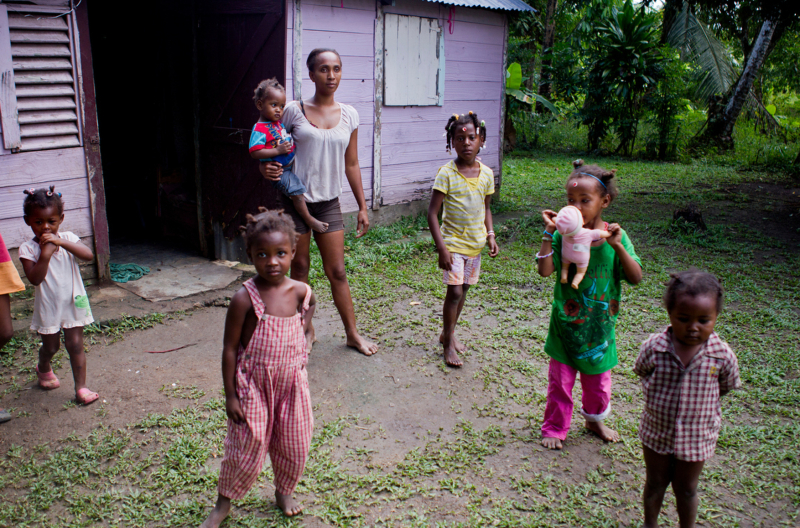Russia is currently engaged in a heated debate over whether to further restrict — or even to completely ban — abortions. At the same time, the government is openly promoting early childbirth, often among teenagers. In its effort to boost the birth rate at any cost, Russia is toying with two extremely dangerous trends: teenage pregnancy and early marriages. This demographic strategy risks driving the population into deeper poverty, increasing domestic violence, and lowering the overall quality of life. Encouraging childbirth among teenagers leads to higher child mortality, lower levels of education, and a cycle of inherited poverty — just as it did in the Dominican Republic. In some respects, Russia has already reached the same point.
Russia has fallen a quarter-century behind in terms of birth rates: in 2024, 1.2 million people were born in the country, while around 1.8 million died. The current fertility rate stands at 1.4 children per woman, and neither maternity benefits nor regional payouts have done much to change citizens’ willingness to have children. Just to sustain the population at its current levels, the fertility rate would need to increase to 2.1. President Putin has demanded an even higher rate, and as a result, the government has shifted from encouragement to coercion: in many regions, access to abortion has been seriously curtailed. Meanwhile, children and teenagers are being taught that childbirth is not just the best, but the only path in life.
Children and teenagers in Russia are being told that having children is the best — and only — life path
Starting September 1, 2025, children as young as six will undergo reproductive health checkups. From age 13, these exams will be conducted annually, as mandated by the Russian Ministry of Health. In at least 21 regions, special one-time pregnancy payments have been introduced over the past year for schoolgirls and students at vocational colleges and universities. The governor of Oryol Region, Andrey Klychkov, stated that he is aware of such programs in 40 regions. According to the World Health Organization, adolescence spans ages 10 to 19 — meaning these payments are being offered to pregnant teenage girls.
Instead of sex education lessons that include discussions of contraception and sexually transmitted diseases, since 2024 Russian schools have been teaching a course called “Family Studies.” It promotes “traditional values,” informs students about how to apply for a marriage certificate, encourages homemaking, and heavily pushes the idea of childbirth — all while avoiding any direct discussion of sex itself.
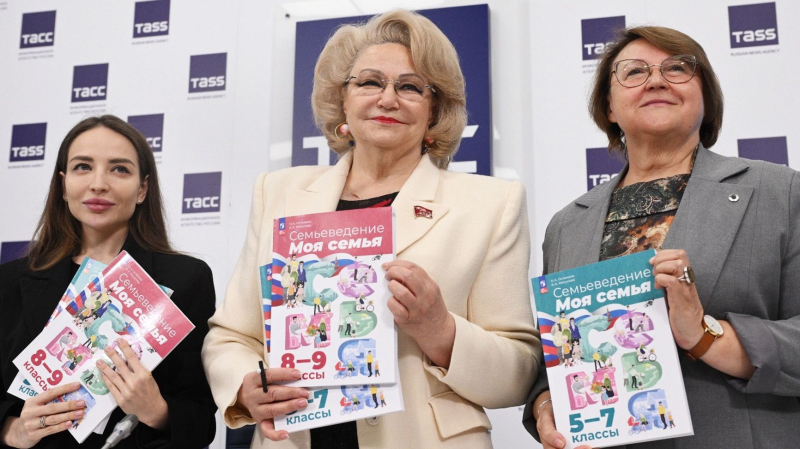
Since late 2024, Russia has banned what it calls “childfree propaganda” — officially defined as “information that promotes a positive image of choosing not to have children.” Even memes about the hardships of motherhood fall under this ban. The word “abortion” has been censored on Russian TV shows. Those who violate the law face fines ranging from 400,000 to 5,000,000 rubles ($5,000 to $64,000).
The Ministry of Education has proposed bringing back school dances in order to “create conditions for romantic relationships.” In May, there was widespread discussion of an interview that 51-year-old retired figure skater Ilya Averbukh gave to Ksenia Sobchak, a quasi-opposition journalist with close family ties to Vladimir Putin. Averbukh’s wife, Elizaveta Arzamasova, is 21 years his junior. Recalling how they met in 2010, Averbukh said, “What do you mean a child? Fifteen is no longer a child — that’s a woman. She knew everything.” After a wave of criticism, Averbukh apologized and said his words had been misunderstood. Sobchak saw no problem: “Friends, what’s with the hypocrisy and all the fuss? Do we really think everyone in this country waits until 18 to become sexually active?”
In its drive to raise birth rates at any cost, Russia is flirting with two extremely dangerous trends: teenage pregnancy and early marriages. Other parts of the world have spent decades trying to overcome these barriers to societal and economic growth. The Dominican Republic, for example, has a fertility rate of 2.25 — above the replacement level President Putin is aiming for. But the Dominican authorities are actively trying to lower it, because behind that number lies no bright future — only thousands of ruined lives, teenage girls forced into motherhood, and children doomed to poverty and despair.
“I really regret what happened,” says 14-year-old Visalin, speaking with resignation about her early relationship and the first six months of her pregnancy. “But what can I do? I lost. I screwed up.”
Visalin is one of the central figures in the Dominican documentary A la deriva (“Adrift,” 2019), which explores a longstanding national crisis: the country’s record-high rate of teenage pregnancy.
Visalin began having sex at age 12 with a partner who was seven years older. “As soon as my period started, so did everything else,” she recalls with a sigh. When asked about methods of contraception, Visalin grows visibly uncomfortable. She can’t name a single one and expresses sincere regret that neither her school nor her family ever explained to her where babies come from. Then she remembers a 13-year-old neighbor who gave birth to triplets — and the many girls her age she sees at the maternity clinic.
Visalin’s story is far from unusual in the Dominican Republic. There are thousands like her. According to official statistics, in the country of 11.3 million people — 18% of whom live below the poverty line — at least one in eight girls becomes a mother before the age of 19. In 2024 alone, nearly 12% of all registered births were to teenagers. That same year, 816 girls under the age of 15 were recorded as pregnant and entered into the country’s maternal health system.
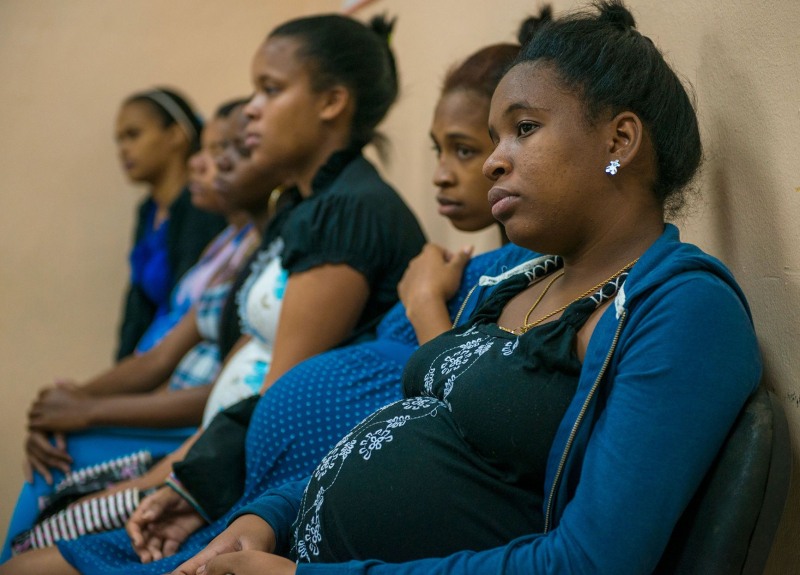
“Most teenage pregnancies occur in rural areas, among girls from poor families with low levels of education,” representatives of the UN Population Fund (UNFPA) office in the Dominican Republic told The Insider. “Statistics show that teenage girls in rural areas are nearly twice as likely to become mothers as those in urban settings. The gap is even wider when it comes to education: teens who finish high school are five times less likely to get pregnant than those who drop out in primary school. The same disparity exists between girls from the richest and poorest families — more than a fivefold difference.”
The Dominican Republic has a total ban on abortion. There are no exceptions — not for threats to the mother’s life, not for rape, and not for severe fetal abnormalities. The criminal code allows for up to two years in prison for a woman who undergoes an abortion and up to 20 years for the doctor who performs it. One of the most widely known cases is that of Rosaura Almonte Hernández, now being considered by the Inter-American Commission on Human Rights (CIDH). In July 2012, 16-year-old Rosaura was rushed to a hospital in Santo Domingo with a high fever. She was diagnosed with acute lymphoblastic leukemia — a cancer of the blood and bone marrow — and was also found to be seven-weeks pregnant.
Doctors immediately concluded that the fetus would likely not survive. Rosaura, on the other hand, had a good chance of recovery if chemotherapy began right away. But the procedure is strictly forbidden for pregnant patients. “Every day she told me, ‘I can’t take this pain anymore, I’m dying,’” Rosa Hernández, Rosaura’s mother, recalled in an interview. “I begged the doctors to terminate the pregnancy. But they only gave her painkillers.”
The doctors refused to perform an abortion, fearing criminal prosecution. They simply waited for a miscarriage. It happened on the morning of August 17, 2012. A few hours later, the 16-year-old — who was never given proper treatment — died. Her mother has been fighting for over a decade to hold those responsible to account. But justice at home has remained out of reach. In 2024, the Dominican Republic’s parliament renewed the total ban on abortion.
Illegal abortions and teenage pregnancies are among the leading causes of maternal mortality in the Dominican Republic, which stands at the shockingly high level of 107 deaths per 100,000 live births. That’s nearly 20% higher than the Latin American average and ten times higher than in Russia. According to the World Health Organization, complications related to pregnancy and childbirth remain among the top causes of death for girls aged 15 to 19 worldwide.
Pregnancy, childbirth, and related complications remain among the top causes of death for girls aged 15 to 19 worldwide
Teenage mothers face significantly higher risks than women over 20. One of the most serious complications, eclampsia, is marked by seizures and dangerously high blood pressure. It can occur during pregnancy, childbirth, or in the postpartum period. A single seizure can lead to the mother’s death from cerebral hemorrhage or pulmonary edema, and the fetus, meanwhile, may die from oxygen deprivation in the womb.
Teen mothers are also more likely to develop postpartum endometritis — a purulent-inflammatory infection of the uterine lining — as well as other gynecological infections. Their newborns are at greater risk too: babies born to teenage girls are more likely to be premature or underweight, and they are also more prone to infectious complications.
“When I found out I was pregnant, it was the worst feeling of my life,” says Tanayris Rosario, with tears in her eyes. She is a participant in a support program run by the Dominican office of UNFPA. “I was so ashamed. I was scared and confused. I wanted an abortion. I didn’t want to have a child at 15. When the school found out, they expelled me. It was like I was some filthy dog that might infect everyone around me. Some of my friends’ mothers even forbade them from talking to me. They thought I was a bad influence. Before I got pregnant, I had so many plans for my life.”
After her son was born, Tanayris tried to find a job, but she did not succeed. She moved in with her uncle, who supported her and the baby in exchange for help around the house. Nine years after the birth of her first child — she now has two — Tanayris, with the help of UNFPA, returned to her long-held dream: she graduated from high school and decided to apply to university. But her story is the exception. More than half of pregnant teenage girls in the Dominican Republic drop out of school, and only 7% go on to receive a higher education.
Nearly 70% of pregnant minors say they didn’t plan or want to become mothers at such a young age. They give birth simply because “that’s how it happened.”
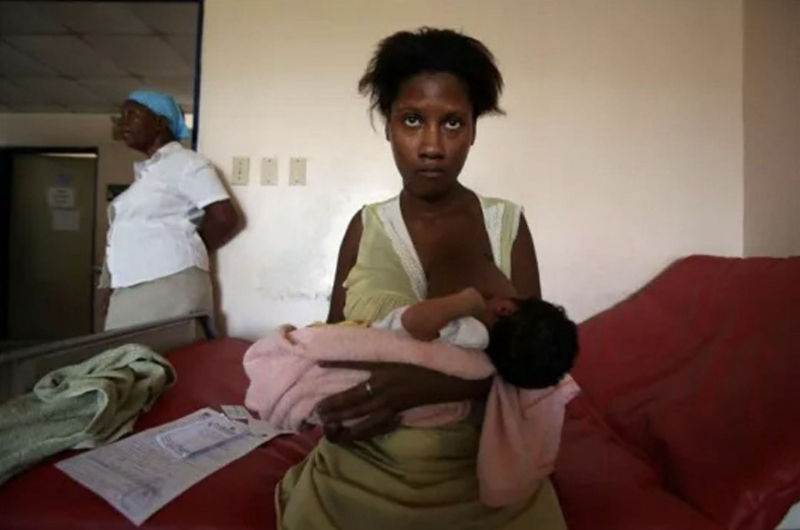
“A teenage mother has fewer opportunities for personal development and for giving her children a better future, which leads to the intergenerational transmission of poverty,” states a February 2025 report from UNFPA descriptively titled “The Price of Inequality: Socioeconomic Consequences of Teenage Pregnancy and Early Motherhood in Latin America and the Caribbean.” According to the study, high rates of teenage pregnancy cost each country in the region an average of about 1% of GDP annually.
High rates of teenage pregnancy cost a country an average of about 1% of GDP every year
Most girls who give birth in their teens become mothers again within one or two years. They do not finish school or receive professional training. They struggle to find stable employment and often end up in informal, low-paid jobs. “Teenage pregnancy and early motherhood negatively affect young women’s prospects in the labor market,” the report says. “They limit access to formal employment and the ability to retain a job.”
Women who become mothers before age 19 will, over the course of their lives, earn 23% less than those who give birth after age 20. The consequences of early motherhood — listed in UNFPA’s commentary for The Insider — include incomplete education, lower income expectations, fewer job opportunities, higher healthcare costs, and reduced tax revenues. In other words, future taxpayers are preemptively turned into unemployed or underemployed women who become dependent on state support. Daughters of teenage mothers often repeat their mothers’ path. And breaking that cycle is extremely difficult.

“Preventing teenage pregnancy is sound economic policy and a smart investment,” UNFPA researchers argue. “For every dollar invested, depending on the country, the return can range from $15 to $40. And it’s not just about cutting costs — it’s about improving quality of life and expanding opportunities for teenagers and their children.”
The answer is widely known and deeply studied: comprehensive sex education. Ideally, reproductive health should be a mandatory subject in schools. But despite efforts by NGOs, human rights advocates, and some politicians, the Dominican Republic — where the Catholic Church holds significant sway — still lacks a unified, compulsory curriculum. Sex education remains optional and is typically handled at the discretion of individual schools and parents, offered as supplementary lessons. These classes aim to teach teenage girls that marriage and motherhood are not the only paths available to them — at least not in the near future — and to spark interest in obtaining further education and maintaining a lifetime of civic engagement.
Widespread and free access to contraception for teenagers is also a key part of the solution. However, the Dominican Republic struggles in this regard: 46% of women lack access to birth control.
46% of women in the Dominican Republic lack access to contraception
The most common method of birth control remains sterilization — used by one in three Dominican women. Shockingly, one in four of those women later admit they didn’t understand the procedure was irreversible.
“It’s heartbreaking that our teenage girls are entering relationships with adult men instead of attending school,” says Theodora Encarnación de Pula, director of the Primary Healthcare Center in the municipality of Pedernales. “And it turns out, they’re doing it because ‘I need a phone,’ ‘there are five or six kids at home and nothing to eat,’ or ‘I want the same trendy clothes as other girls.’ And in exchange, they have sex.”
So-called “child marriages” were only officially banned in the Dominican Republic in 2021. Before that, children under 15 could legally marry provided that they received parental consent and no court objected, meaning that, in practice, there was no minimum age for marriage at all.
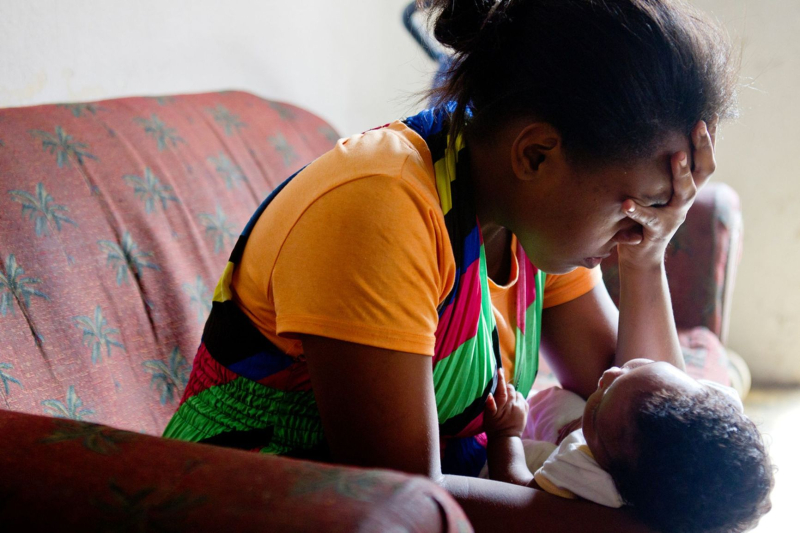
“When girls or teenagers marry or begin cohabiting, the damaging effects can last their entire lives,” states a UNICEF report titled “Child Marriage and Early Unions in Six Municipalities of the Dominican Republic.” It continues: “They are far more likely to drop out of school. Their chances of finding a decent job shrink — and over the course of their lives, they earn on average 17% less.”
Early unions are the leading cause of teenage pregnancy. And in most cases, the girls involved are not dating peers, but adult men. “One defining feature of adolescent motherhood is the significant age gap between the mother and the father,” explains the annual report of the Dominican Republic’s National Statistics Office. “In most cases, the age difference exceeds 10 years, with some cases reaching 30 years or more. In 2024, the average age of men who impregnated teenage girls was 24.96.”
Most of these men disappear as soon as they learn of the pregnancy. In both 2023 and 2024, at least 86% of new mothers in the Dominican Republic identified their marital status as “single” on official paperwork.
More than 86% of new mothers in the Dominican Republic identified themselves as single in official documents in both 2023 and 2024
Early unions come with a high risk of physical, emotional, and sexual violence against girls. Official statistics show that one in five Dominican girls aged 15 to 19 experiences abuse from their husband or partner.
At this point, the statistics begin to resemble those in Russia. And given the current direction of Russian policy, it is entirely plausible that within a generation the country’s rates of teenage pregnancy, infant mortality, lack of education, and other indicators may start to match those seen in the Dominican Republic. Russia is not Europe, officials frequently declare — it has its own special path. For now, that path is leading toward the worst outcomes observed in other parts of the world.


